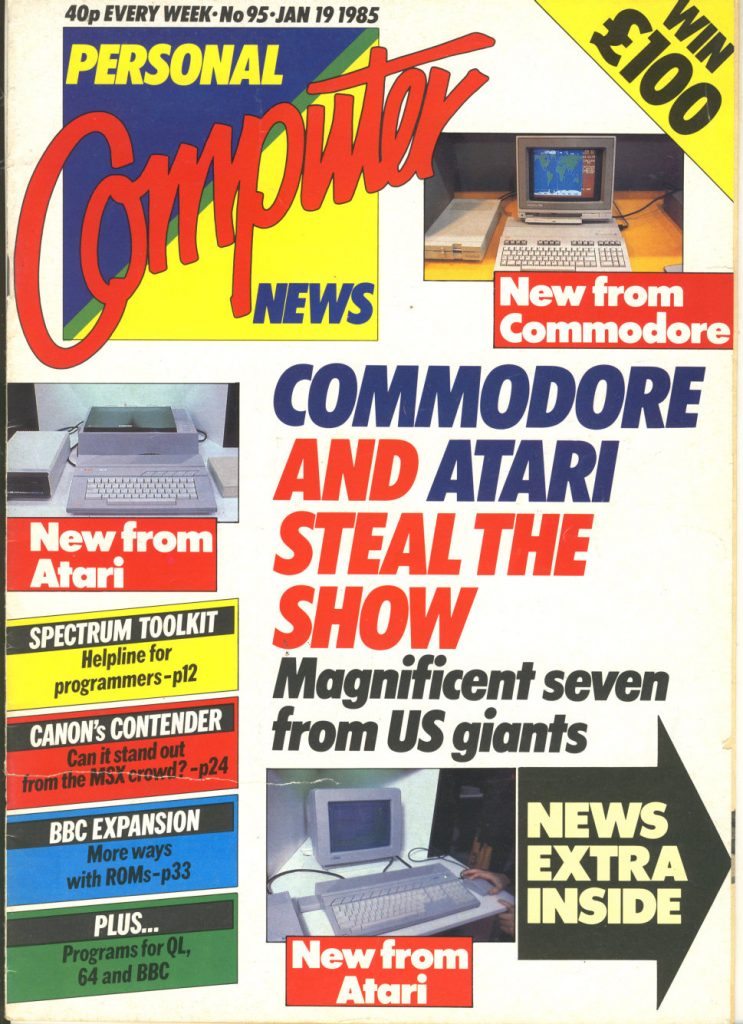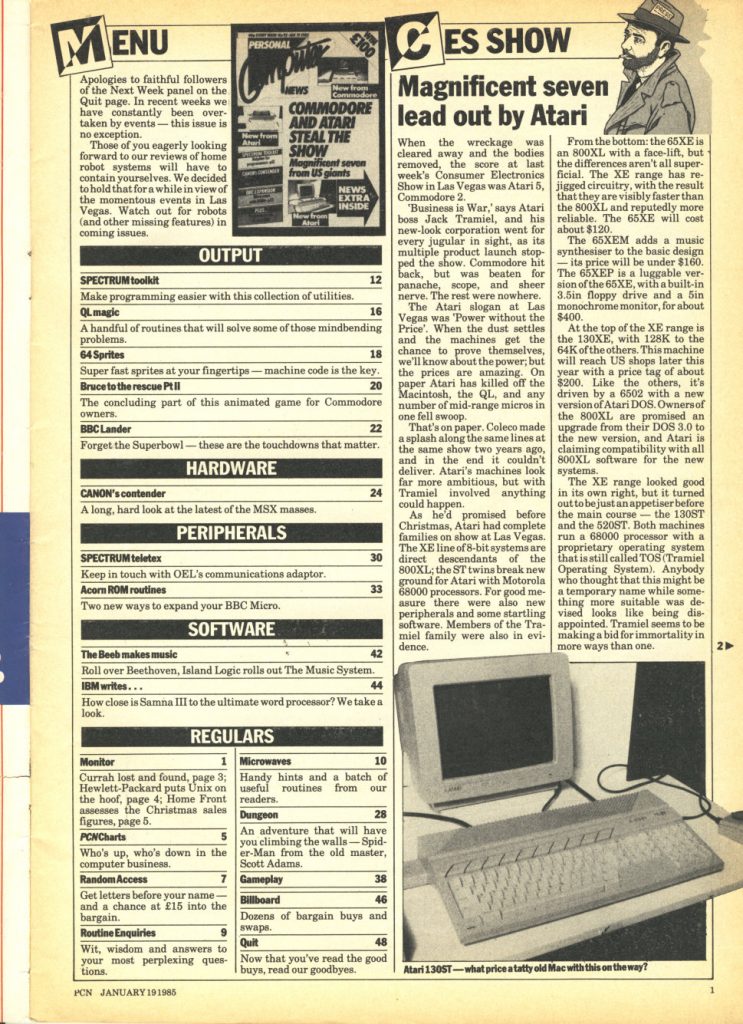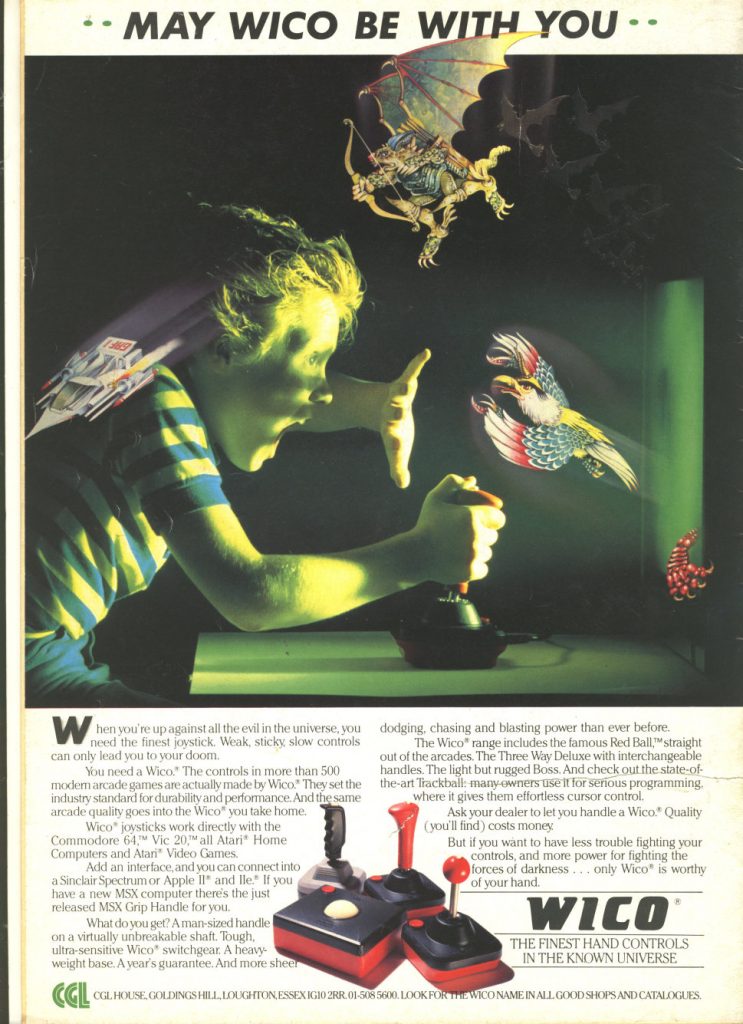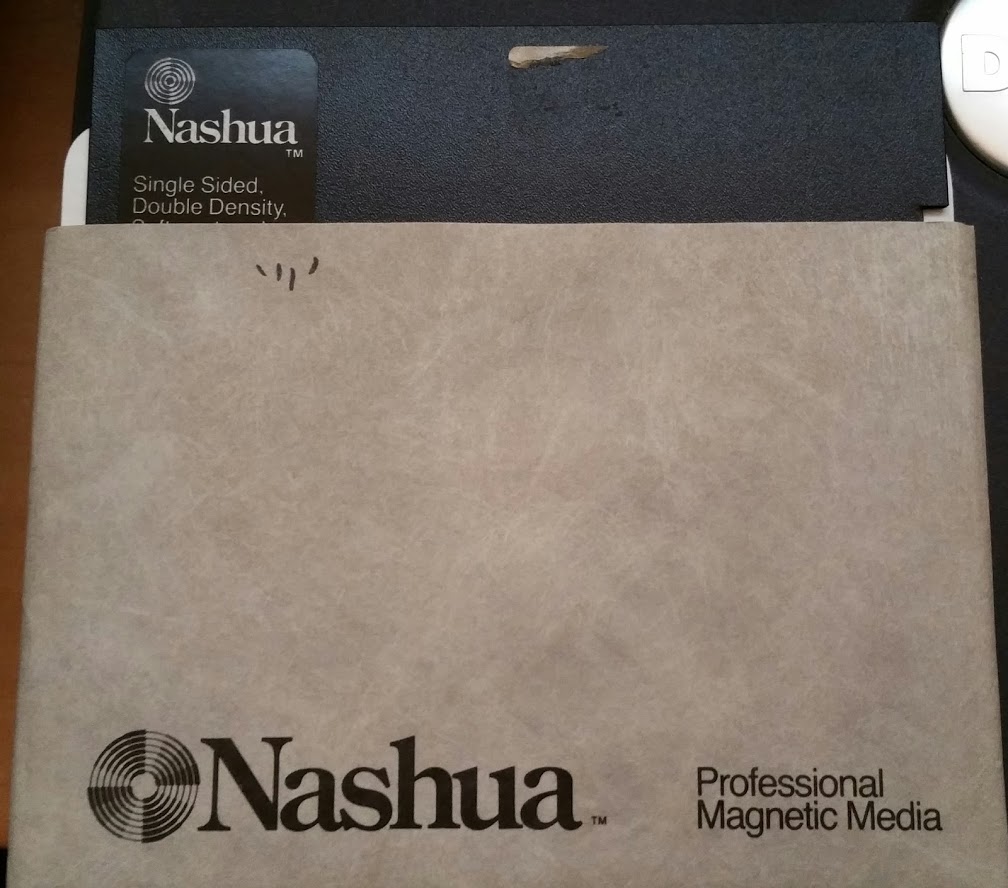
I found a number of 5.25″ disks at a thrift store a number of years ago (we are talking late 1990s probably). I finally got around to acquiring a 5.25″ disk drive and extracting the contents a several years back. Since then, I have been occasionally posting the content here.
Based on the contents, at least some of these disks were apparently once owned by someone named Connie who used to run the “Close Encounters” Special Interest Group (SIG) on Delphi in the mid 1980s.
A description of this SIG was found in a document on one of the disks: “This SIG, known as ‘Close Encounters’, is a forum for the discussion of relationships that develop via computer services like the Source, CompuServe, and Delphi. Our primary emphasis is on the sexual aspects of those relationships.”
This service was text based and was accessed via whatever terminal program you used on your computer to dial in to Delphi’s servers. Many of these disks have forum messages, e-mails and chat session logs. All of this is pre-internet stuff and I don’t know if there are any archives in existence today of what was on Delphi in the 1980s. In any case, much of this stuff would have been private at the time and probably wouldn’t be in such archives even if they existed.
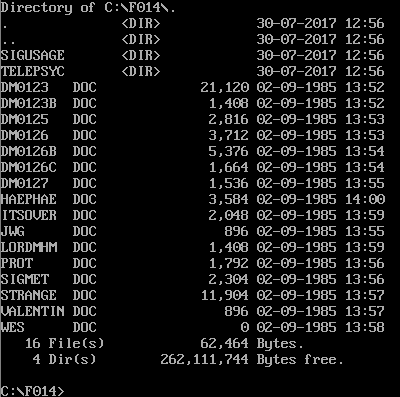
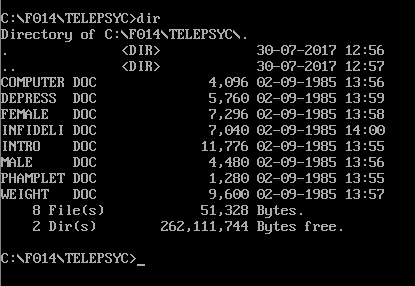
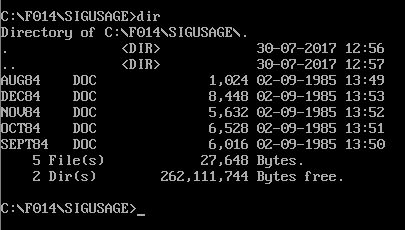
This post includes the contents of DM0126B.DOC. This file is dated September 2nd, 1985 and contains e-mail dated in January 1985. This seems to be a file capture of a mail reading session. Included are several e-mails regarding The Friendship Circle Special Interest Group and some related to SIG Operators. It also looks like the mail reading session was interrupted with a couple of direct messages. Many of the files from these disks have been related to a special interest group on Delphi called Close Encounters. However, this mail reading session as well as the previous one I posted contains e-mails related to another Special Interest Group called Friendship Circle. The e-mails read here are among the oldest of any I’ve found so far. Based on one of these e-mails, I don’t think Friendship Circle and Close Encounters were really separate SIGs but rather Friendship Circle became Close Encounters.
===
DM0126B.DOC
===
MAIL #3
From: CABUYS 26-JAN-1985 20:47
To: CABUYS
Subj: request from jsplear
I can only assume that you wish to join the Friendship Circle
SIG.
Your message to me only included your anname. I checked the
PEOPLENET to see if you had a profile there and you didn't,
so I must know your age to add you. This is required becauase
PRINCESS>> you ok? everything ok?
the main topic we discuss is sexu - with emphasis on the
sexual aspects of telecommuncations via services like the
Source, CompuServe and Dellphiphi.
BCOLBERT would like to talk with you.
As soon as I ahve have aheard from you as to your age, I will be
more than happy to sen dyou addd you additional information.
Thank you for your interest in The FriendShip Circle SIG.
-CABUYS (Sig Manager)
MAIL> fforor
Unrecognized command 'FFOR'
MAIL> for
To: Armias
Subj: The Friendship Circle SIG
MAIL> d
MAIL>
MAIL #3
From: CABUYS 27-JAN-1985 00:25
To: WES,JOHNWG,@SIGOPS
Subj: some suggestions
I am sure I speak for all the SigOps in expressing my
appreciation to Wes and JohnWG for a very informative
conference. I'm sure we are all looking forward to the
changes in the SIG program.
We all seem to realize that regular conferences with fellow
BCOLBERT>> I'm still learning.
SigOps and Delphi personnel are a must for a successful
partnership. However, if I may, I would like to make some
suggestions about these conferences.
First, my SIG, The Friendship Circle, has held conferences on
CIS for several years and has been holding them on Delphi
since last August. We have a conference protocol that allows
each person to have his say uninterrupted. Although this
protocol tends to slow things down a bit, you do have the
feeling of having accomplished something when a conference
is over and the frustration of trying to have your say is
greatly diminished.
Second, all TFC conference topics are announced in advance,
using Dmail. I would suggest that possible topics for
discussion be sent to Chris and that he schedule conferences
to discuss these particular topics. This, in addition to
the conference protocol, will allow for a more organized
meeting and we will not all feel as tho we are jumping from
one thing to the other without resolving anything.
Granted, since SigOp conferences are new, there is a lot to
discuss, but we need to do it in an orderly manner. Also I'd
like to suggest that we try to stick to a two-hour time limit
for conferences and have the conferences on the same night
or same date as this will help enable many of us to work the
conferences into our busy schedules. (But please, please
don't have the conferences on Saturday nights!)
Another suggestion to make things flow smoothly would be to
use the /send function to say your individual "hellos" and
"goodbyes" when someone says he/she is leaving. This will
allow the normal conference to continue uninterrupted.
Let's all work together as a team to have the most successful
SIGs around!
-Connie, SigOp, The Friendship Circl
e
P.S. If you would like to review the conference protocols I
mentioned above, TFC Info article #10 is the place to look.
Or you can send me a note via Dmail and I'll send you a copy.
Thanks.
MAIL> d
MAIL> ^Z
(Back to Conference)
read 2
MAIL #2
From: UAP0M 24-JAN-1985 19:31
To: WES,DAN,CHUCKG,KIP,@SIGOPS
Subj: SIGOP Conference reminder.
A quick reminder of the first monthly SIGOPs meeting this comin
g sSaturday
01/26/85 at 9:00 pm (ET) in group SIGOPS MEETING in DELPHI CONF
ERENCE. The
passordword is: SGIS Hope you all can make it.
To JOIN a PASSWORD PROTECTED GROUP, do the following:
1) Enter the DELPHI CONFERENCE SYSTEM
2) issue the following command : /PASS SGIS
3) Issue ?/JOIN SIGOPS MEETING or /TALK ,<3# assigned to grou
p>
^Y
MAIL> d
MAIL>
MAIL #2
From: BCOLBERT 27-JAN-1985 00:30
To: CABUYS
Subj: RE: some suggestions
THhanks for the note. I was late as I was in the midst of workin
g on a Telephone
directory for the Deaf in Florida on the same computer.
Your thoughts sound good to me. I missed your name, since I am
new as a SIGOP
and didn't recognize it.
Hope JAX warms up a little. We are due to have a freeze here in
Orlando, too.
Bye
Bob
MAIL> /
Unrecognized command '/'
MAIL> re
To: BCOLBERT
Subj: RE: some suggestions
Enter your message below. Press CTRL/Z when complete, CTRL/C to
quit:
Thanks for your
AH>> hello
support and comments regarding my suggestions.
And best of luck with your SIG!!!
-Connie
^Z
Press RETURN to return to reading your mail
MAIL> d
MAIL>
No more messages
MAIL> dir
MAIL
# From Date Subject
1 THESTRANGER 24-JAN-1985 Final Confrence
MAIL>





